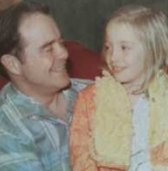Arlyn Anderson grasped her father's hand.
艾林·安德森握着父亲的手。
"A nursing home would be safer, Dad," she told him. "No way," Jim Anderson interjected.
告诉爸爸说:“爸爸,养老院会更安全”,“不可能,”吉姆·安德森插嘴说。
At 91, he wanted to remain in the woodsy Minnesota cottage he and his wife had built on the shore of Lake Minnetonka, where she had died in his arms just a year before.
父亲91岁,想继续住在他和妻子在明尼托卡湖岸边建造的明尼苏达州森林小屋里。这个地方是一年前妻子死在他怀里的地方。
Arlyn had moved from California back to Minnesota two decades earlier to be near her parents.
20年前,为了离父母近一些,艾林从加利福尼亚搬回了明尼苏达州。

Now, in 2013, she was fiftysomething and finding that her father's decline was all-consuming
2013年,50多岁的艾林发现父亲的病症让她有些体力不支。
Her father—an inventor, pilot, sailor, and general Mr. Fix-It—started experiencing bouts of paranoia, a sign of Alzheimer's, in his mid-eighties.
父亲是一名发明家、飞行员、水手,也是普通的修理师——父亲在80多岁的时候开始出现妄想症,这是老年痴呆症的一种症状。
Arlyn's house was a 40-minute drive from the cottage, and she had been relying on a patchwork of technology to keep tabs on her dad.
艾林的房子离小屋只有40分钟的车程,她一直依靠各种各样的技术来监视父亲的一举一动。
She set an open laptop on the counter so she could chat with him on Skype.
她把打开的笔记本电脑放在台子上,这样她就可以用Skype(网络电话)和他聊天。
She installed a camera in his kitchen and another in his bedroom so she could check whether he had fallen.
她在父亲的厨房和卧室各安装了一台摄像机,以便检查父亲是否跌倒。
When she read about a new eldercare service called Care.coach a few weeks after broaching the subject of a nursing home, it piqued her interest.
在提出养老院话题的几个星期后,艾林读到一项名为Care.coach的老年护理新服务,这激起了她的兴趣。
For about $200 a month, a computerized avatar (controlled remotely by a human caregiver) would watch over a homebound person 24 hours a day;
一个用电脑处理的替身(由看护人远程控制)每天24小时监视家里的人,每月大约200美元。
Arlyn paid that much for just nine hours of in-home help. She signed up immediately.
艾林花了200美元只够请9个小时的家政服务。她立即注册了。



